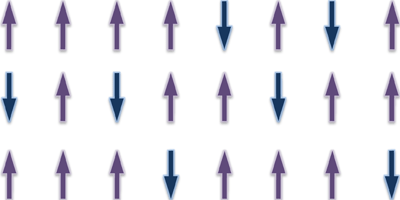Gravity Finds a New Partner
The classical description of gravity fails when looking at interactions at small length scales, but developing a quantum theory for gravity has proven to be one of the most fundamental challenges in physics. For such a theory to be realistic, it needs to describe gravity in four dimensions—three spatial dimensions, plus time. But theorists can learn from simpler, three-dimensional (3D) theories. And, some of these 3D theories for gravity (those in a so-called anti-de Sitter space) can be mapped to two-dimensional conformal field theories, which can be solved. These 2D field theories are said to live at the boundary of spacetime described by the 3D theory for gravity.
Now, in a theoretical paper appearing in Physical Review D, Alejandra Castro of McGill University, Canada, and her colleagues argue that one of these dual conformal field theories is the critical Ising model in two dimensions, a well-understood model for describing magnetic phase transitions in a lattice of interacting spins. The gravity theory involved in this duality is strongly coupled, meaning quantum effects are important.
The authors compute the partition functions of the two theories with certain boundary conditions, and find that the spectra of the theories match. To fully prove this duality, Castro et al. will need to show the partition functions for each theory match for a more general set of boundary conditions. However, even at this stage, the duality sheds light on some three-dimensional gravity theories with strong coupling. – Alin Tirziu





